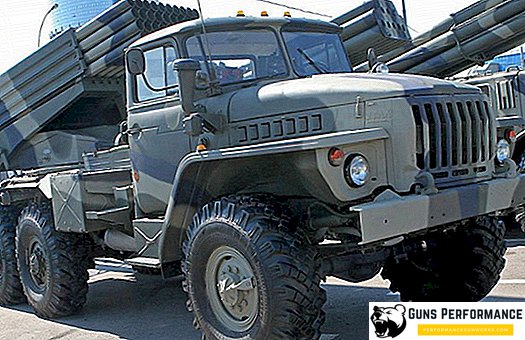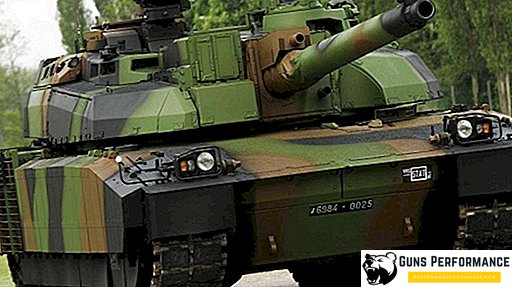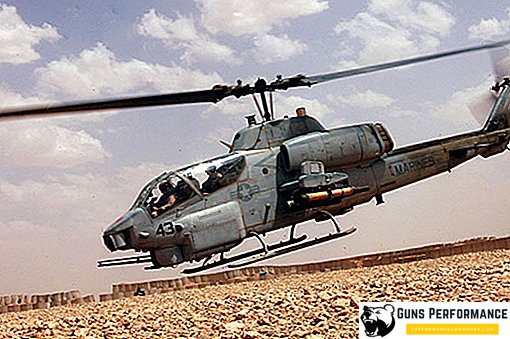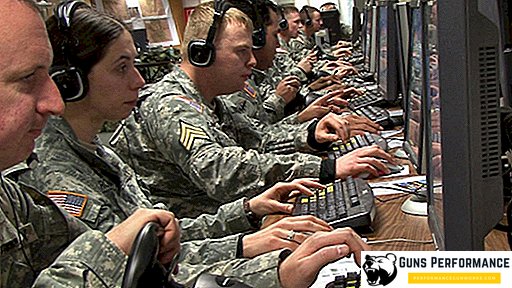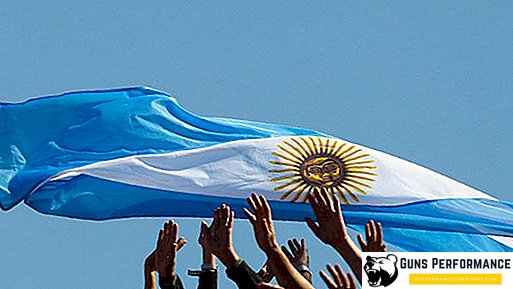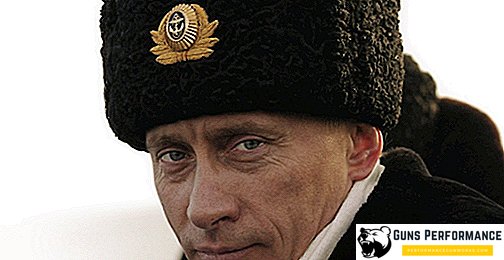Battles are different: some are so fleeting and insignificant that only historians remember them, and some are so large that they change the whole course of the military campaign and remain in memory for decades.
In the Great Patriotic War, the Battle of Stalingrad became a turning point. She clearly demonstrated: with the Nazis, you can not just fight - you can successfully win. Yes, the dead were in the hundreds of thousands. But the prestige of such a victory and its psychological effect were decisive for every Soviet soldier.
According to the German newspaper Welt, in the hostilities that were fought in the Pacific during the Second World War, the battle for Guadalcanal Island was a battle like that.
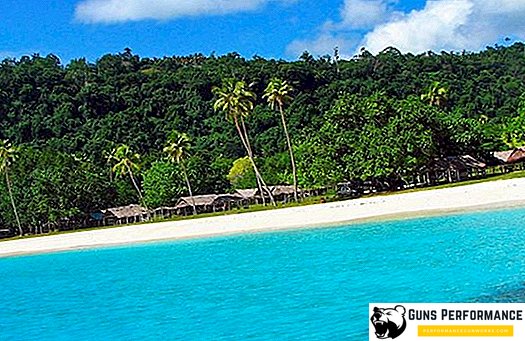
Of course, such a comparison is very conditional. Indeed, in the city on the Volga, huge army groups of the USSR and Germany came together in a battle, and the fierce battles lasted almost without interruption for several months. And on a tropical island, due to its limited size, at the same time only a few tens of thousands of people took part in the hostilities. However, the important thing here is not the number of participants, but the effect of victory. After all, just like at Stalingrad, the battles for Guadalcanal turned the tide of the war itself. Because they showed that rumors about the invincibility of the Japanese in the jungle and during night battles are nothing more than rumors, and they can be defeated.
Why precisely Guadalcanal?
The defeat suffered on the Midway Atoll by the Japanese Navy in June 1942 was too heavy to conduct offensive operations. Therefore, Japan has focused its efforts on strengthening the outer defensive ring. To do this, it was necessary to obtain the possibility of air control over the sea routes leading to New Zealand and Australia. To solve this problem allowed the construction of an airfield on Guadalcanal, which immediately began.

The construction site was discovered by US intelligence, and the command of the US Navy quickly calculated the consequences. To prevent the emergence of the airfield, the offensive Operation Watchtower, launched on the night of August 7, 1942, was developed first on the Pacific military bridgehead.
Guadalcanal itself and the small island of Tulagi adjacent to it landed units of US marines totaling 19,000 people. The island garrison of the Japanese was small and did not expect any surprises, so it did not enter into a serious confrontation and chose to dissolve in the jungle. So, by the morning of August 8, the airfield complex came under the control of the Americans and was renamed Henderson Field. It turned out that the construction was almost complete, so that the new owners had just to complete the project - and in only a few days the runways were open not only for fighters, but also for bombers and transport workers. And so that the aircraft carriers of the Americans did not become easy prey for the Navy of Japan, by order of Admiral Frank Fletcher, they were removed from the island along with the main composition of the expeditionary force, and the sea cover of the airfield was assigned to only a few ships.

Of course, the Japanese 8th Fleet did everything possible to ensure that these days did not become an unplanned vacation for Americans. Already on the night of 8/9 August, the ships of the American cover were attacked and lost four heavy cruisers with serious damage to the fifth.
Japanese troops began to be transferred to Guadalcanal, in support of which a squadron of several cruisers was sent. The number of troops on the island was brought to 20 thousand people. Such a large number of soldiers required constant material and technical supply, but American planes prevented it from doing so.
To avoid air attacks, the Japanese fleet has developed an original system of guaranteed delivery, called the Tokyo Express. The plan was simple and effective at the same time: the fast destroyers of the Japanese Navy dumped the supplies and equipment packed in hermetic containers right overboard near the island, and the current and waves nailed them to the land forces.
These units launched active combat operations, dragging American units into incessant fire clashes, which became the heaviest in the entire war in the Pacific.

The Americans restrained the enemy's attacks on Henderson Field, but this was almost more luck than courage and combat skills. Night shelling of the Japanese caused damage to the airfield, but they were frivolous and quickly eliminated.
We will not stand up for the price ...
Violent collisions quickly brought the losses to a level that was absolutely incomparable with the strategic importance of not only the airfield, but also the island. However, the situation has ceased to be considered by the parties as an ordinary military operation - it became a matter of prestige and psychological superiority, becoming a personal duel between top commanders and the ruling circles of the United States and Japan. And the number of victims here did not play a role ...
The Japanese naval forces sent ships to ship to the Solomon Islands — even when the Americans “saw through” the Tokyo Express system and decided to destroy the ships before the supplies were dropped. In turn, by order of President Roosevelt to ensure victory at Guadalcanal, the chiefs of staff were instructed to transfer and use on the island all the weapons at the disposal of the units in order to win. It was very difficult to ensure the fulfillment of such an order at that moment - after all, the American fleet just lost one of the aircraft carriers and eliminated the heavy damage of the second.
The concentration of such forces and means of warfare was bound to lead to a tough and swift denouement. And it came in November 1942.
Radar against ship artillery
The battle for Guadalcanal from infantry clashes quickly developed into a war of artillery barrels. Realizing this pattern, the supreme commander of the imperial fleet of Japan, Isokuru Yamamoto, decided precisely on the ship's artillery and make a decisive bet.

By his order, two Japanese battleships took up direct positions at the runways and ground positions of the American marines and began firing at them without stopping. In addition to the damage to the airfield and the marines, shelling had another goal - under its cover, 7,000 Japanese soldiers landed on the island and entered the battle, which Yamamoto considered the latter to be American.
At first, the calculation justified itself: the Americans held their positions, but with great difficulty and at the cost of losing a large number of ships. And when another fleet came to the aid of the first wave the following night, headed by Admiral Nobutake Kondo and including the battleship and a large number of cruisers.
The close victory of the Japanese already seemed obvious. Moreover, in the night battles the Japanese were great. However, a factor intervened in the matter that Nobutake Kondo did not count on.
This factor was technical progress. The Expeditionary Corps, which was opposed to the Japanese, and was headed by Willis Lee, included two battleships and several destroyers. But the quantitative preponderance of the Japanese smashed to pieces the technical novelty of the Americans - the newest radar stations, which provided a gunfire. For them, it didn’t play any role whether the battle was fought day or night, because they were equally easy to detect targets at any time of the day. Therefore, the entire experience of the night battles of the Japanese turned out to be powerless in front of accurate hits by American artillery.
However, it must be admitted that even technical excellence has not become an absolute advantage. At the beginning of the battle, the Japanese were able to successfully neutralize all the destroyers of the US Navy, and on the battleship South Dakota the power supply system failed, and its radars turned off - the ship continued the battle almost blindly, receiving more than forty hits, but keeping afloat. But then the second battleship, “Washington” tracked down the Japanese ship “Kirisima” with a radar installation at a distance of seven kilometers and heavy fire with six dozen hits in a few minutes turned it into a useless mountain of metal.

This forced the Japanese ships to divide, so as to avoid damage. But this separation led the operation to failure - the cruiser, a pair of battleships and three destroyers were destroyed. The losses of the Americans were also serious - their fleet lost seven destroyers and a pair of cruisers.
The failure of the operation of Admiral Isokuru Yamamoto for Japan meant not just the loss of the airfield - the possibility of supplying Japanese units at Guadalcanal was lost. And the ships of the "Tokyo Express", which previously supplied ground forces, this time evacuated all those who remained alive.

The American marines that gained full control of the island in February 1943 combed its entire territory very carefully - but they only found military property that could not be evacuated quickly.
Prestige price
For the Japanese side, the defeat on Guadalcanal Island proved devastating. More than 30 thousand soldiers died in the battles, while 24 naval and a huge number of transport ships were lost in naval battles. As a result, the offensive potential of the fleet was completely exhausted, and the resources of the military industry were no longer enough to restore it.
The losses of the ships of the American side were just as great. But unlike the Japanese, the Americans replenished the lost very quickly - every month a new battleship or aircraft carrier descended from the stocks of US military shipyards. And taking into account that the marines lost only about 1,600 people, the victory was hard for the USA - but still very successful. And the experience of this combat operation made it possible to develop a special strategy of “jumping over the islands” - it was later used to advance the American troops in the central Pacific region.

Like the defeat of the Wehrmacht at Stalingrad, the defeat of the imperial fleet at Guadalcanal led to the complete loss of the offensive combat capability of the Japanese. And as a result, the battle for a tropical island was a turning point in the fighting in the Pacific.




